Pushing the limits and reaching new heights
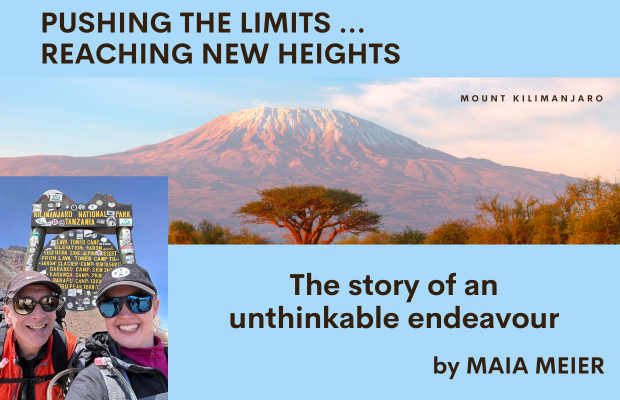
Kilimanjaro, the roof of Africa, a dormant volcano of 5,895 meters in height is a major hiking and climbing destination that about 35,000 people attempt to summit each year. I don’t know whether Craig or myself ever thought we would be two of these people to take on this adventure. But …we did it, we made it to the top and all the way back down, which proved to be the hardest part!
What led us to this decision to attempt this in the first place? Good question! We are both avid travellers who love to explore and experience new places and adventures all over the world. Both of us knew a few people who had done this climb in the past, so when I brought up the idea in the fall of last year of possibly doing it at some point, Craig voiced his desire to try it too, and we said …ok let’s do this! If not now, when?
In the past couple of years, both of us have been through some pretty significant surgeries and treatments with our respective bleeding disorders -I have VWD Type 2a and Craig has severe hemophilia A with inhibitors. The reason we were even able to consider this climb is because Craig is successfully being treated with Hemlibra and had his knee replaced with zero bleeding complications. He was able to aggressively rehab and strengthen his knee to be able to climb. On my end, I had a hysterectomy to manage my heavy menstrual bleeding issues which would have prevented me from taking on this endeavor. Despite this, I struggle monthly with ovarian cyst ruptures which cause pain and bleeding. Fortunately, I’m able to treat at home with factor VIII & von Willebrand factor (Humate P), which significantly cuts down my pain, discomfort and recuperation time needed. I was worried this could affect the start of our climb, but luckily, my ovulation cycle occurred the week before we left, and we were able to manage things effectively at home; I was rested and feeling good by the following week.
Having made the decision to do this, we booked our flights, chose the tour company we were going to trek with and began our training! I work as a personal trainer and health coach, so I planned our workouts each week, researched hikes in and around Ontario we could do on the weekends and we joined a gym in Toronto called Altitude Athletics. This place was incredible as it allowed us to train at altitude for months, allowing our bodies to adapt to working hard at lower oxygen levels and helped us improve our overall fitness. Six months of consistent strength training and cardio work had us feeling as prepared as we could be once June came along. Now it was time to put all this hard work to the test!
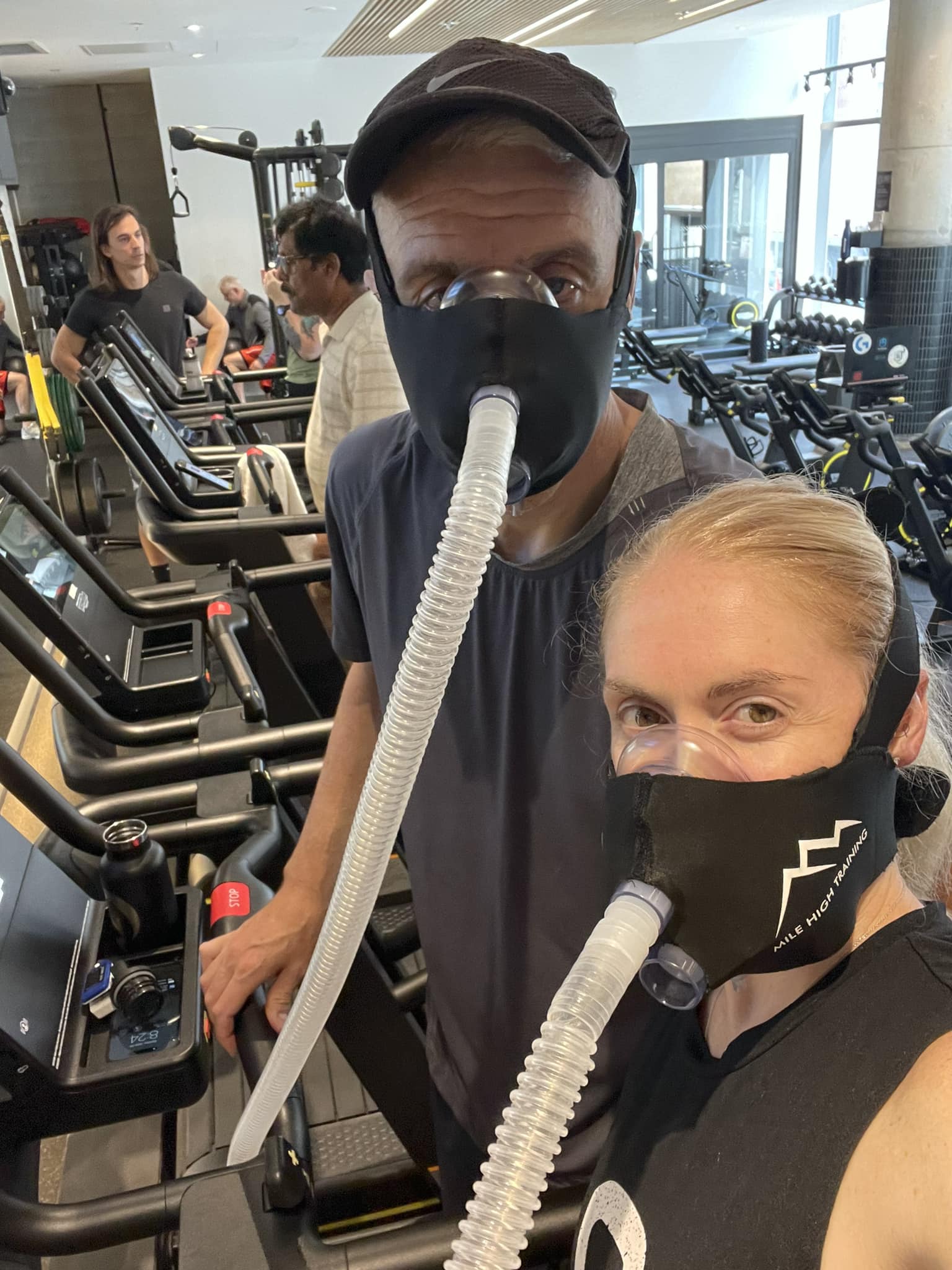
Training at Altitude Athletics
We arrived in Tanzania on Wednesday, June 28, and our climb was to start on the Friday, June 30. We therefore had a couple of days to acclimatize and get used to the time zone. The morning of the climb, our guides met up at our hotel with the group of 10 people who would be spending the next seven days together.

Our group of 10, together, all the way up!
We were doing the Machame route, which we found out is the second most difficult route up the mountain, but also has a good success rate as it gives enough time for proper acclimatization. One of the reasons we chose this route was because it begins in the rainforest, which was a beautiful start to the climb. It allowed us to see all the diverse flora that makes up this stunning part of the mountain.

There was definitely a lot more rock and scrambling (mountaineering term for ascending steep terrain using one’s hands to assist in holds and balance) than we anticipated in the first couple of days, but it was a good challenge, and we both managed well with it all. By Day 2 we were already above the clouds which made for some pretty stunning views. At night you could see the twinkling lights of the city far below, showing how far up we’d already climbed.
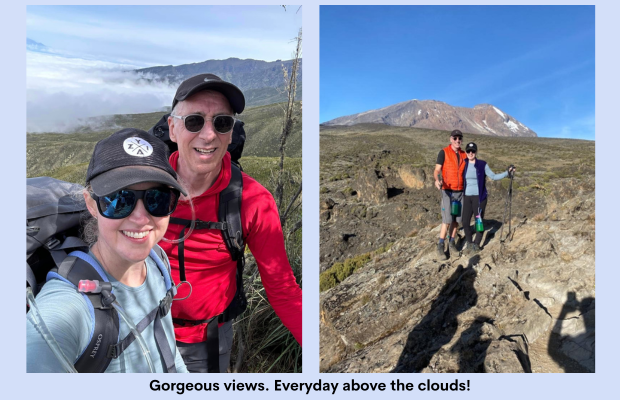
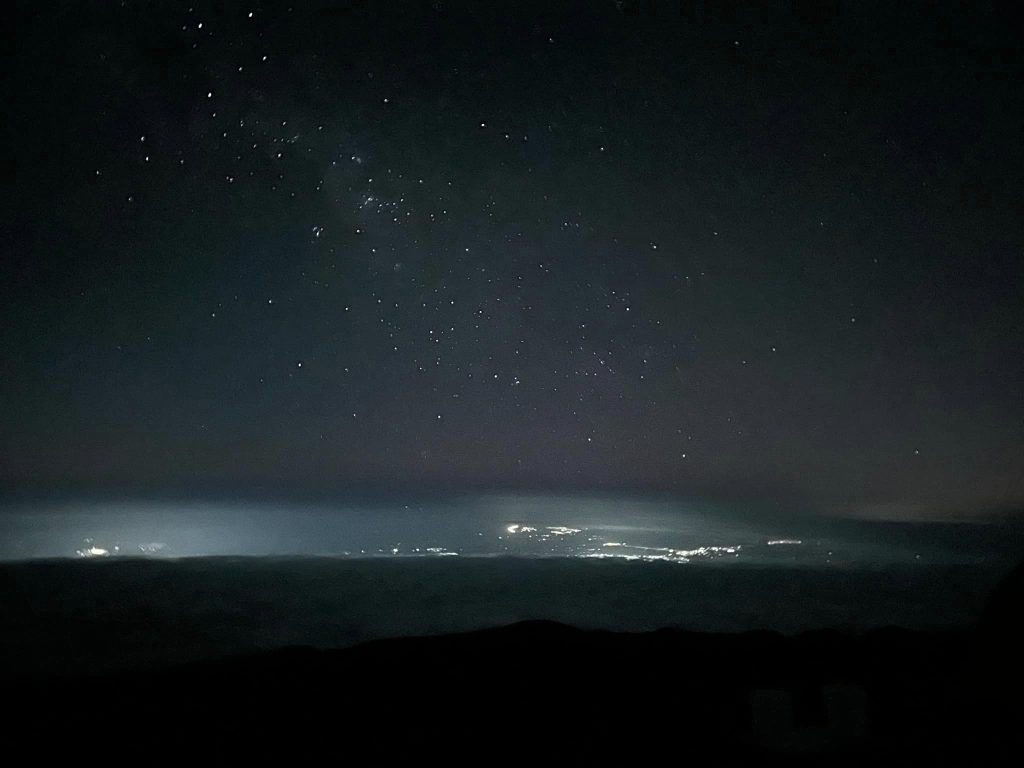
Lights from the sky mixing with city lights way down.
The next two days were nothing short of amazing! We climbed to our highest elevation yet at 4,600 meters to reach Lava Tower, an incredible lava rock formation pointing high into the sky.

Lava Tower
The vegetation also changed considerably and we got to see these incredible trees called giant groundsels, which kind of look like huge pineapples.
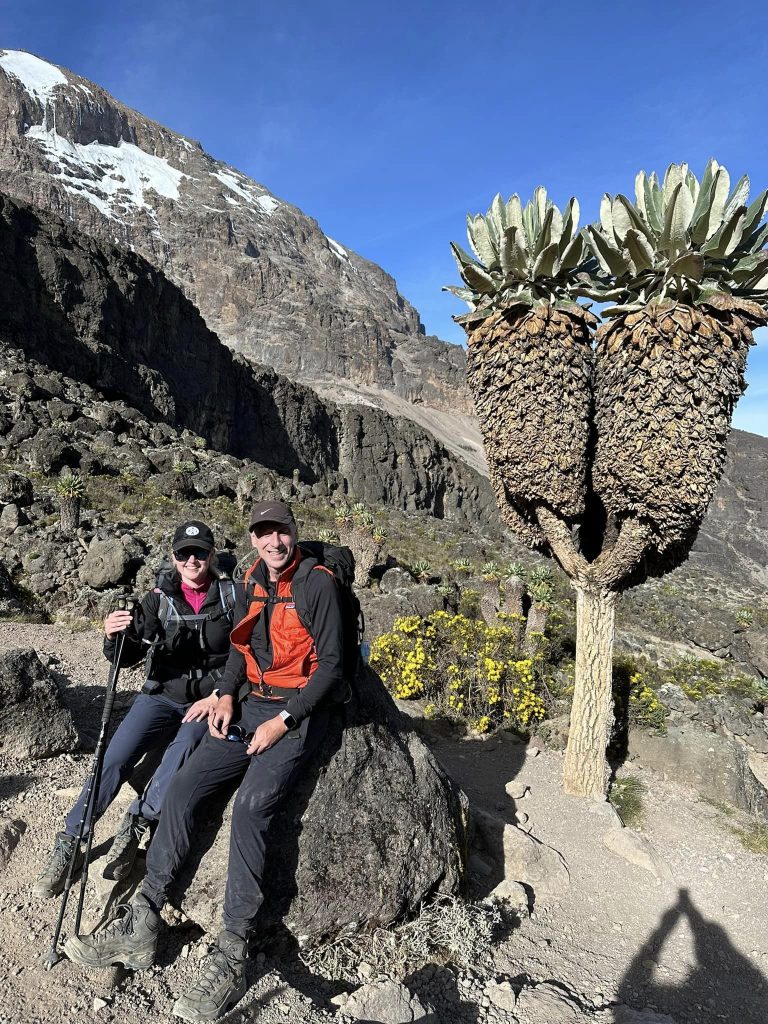
The giant groundsels
Craig also treated effectively with factor VIII (Eloctate) on Days 3 and 5 to make sure his levels were staying up and preventing any bleeds. Treating with factor isn’t ideal to do on the mountain, but it’s totally manageable and was what he and his hematologist had discussed and planned before we left.
The biggest accomplishment of these two days was that we completed the Baranco Wall. Not gonna lie, this freaked both of us out a little! It was two hours and 800 feet of really steep climbing, some pretty big drops and cliffs which required lots of scrambling to stay close to the wall. Thankfully our guides were there to direct us …step here with this foot and grab here with this hand. We both managed the terrain, but definitely was the limit in terms of Craig’s knee range of motion on a few of the rocks -there were some really big steps needed!

Days 5 and 6 took us from Karanga Camp to Barafu Camp to Stella Point to Uhuru Peak (THE SUMMIT)! These two days were sooooo long!
Barafu Camp was the last camp before our journey to the summit. So when we arrived, the goal was to try and sleep from 3 to 10 p.m. Then we were to wake up, eat dinner and prep to start the summit push at midnight. But with the heat in the tent adding to the adrenaline and anticipation of the summit climb, neither of us slept much.

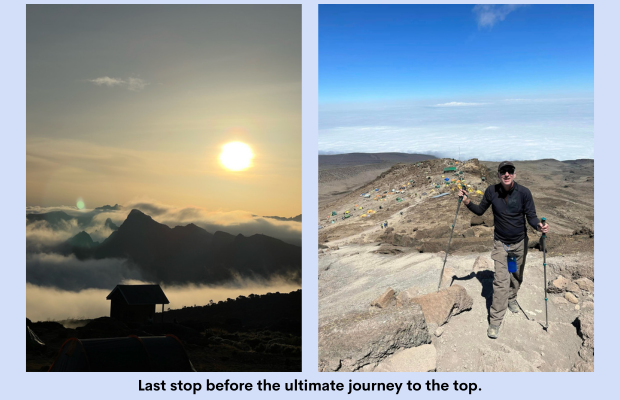
The ascent from camp started at midnight with a gorgeous full moon, a star-filled sky, and the temperature around -15oC. I had four layers on the bottom half of my body and five layers on the top half, headlamp, backpack, hat, buff (scarf-like piece of fabric) to keep my face warm and mitts with hand warmers inside. I was really glad I had brought those along to put in my mitts half way up. It was incredible to see the different groups heading up the mountain; you could see this trail of headlamps winding its way up! Slowly but surely, we worked our way along the winding path in the dark, stopping every hour or so for 5-10 minutes to rest, drink and eat something to give us more fuel. It was long and slow, and we both could definitely feel our breathing was more difficult the higher we went. But fortunately, other than that, we felt really good! No headaches, no nausea or dizziness. And finally …when the sun started to rise and we saw this magnificent sunrise above the clouds it gave us this incredible warmth and excitement to keep pushing to the top!
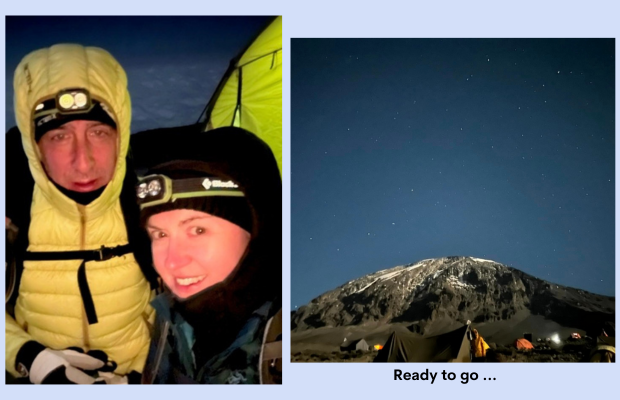
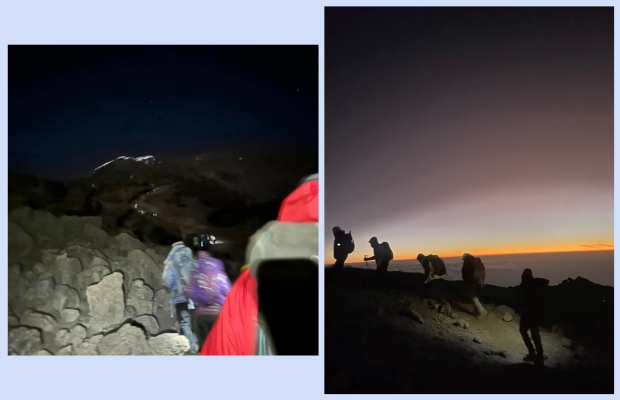
Seven hours later we climbed over the ridge to Stella Point, the first official summit point at 5,756 meters. It felt amazing to come up over the crest of the mountain and see this point. But we weren’t done yet! From there we continued another 45 minutes to an hour to reach Uhuru Peak, the actual summit at 5,895 meters. We were both overcome with emotion once we reached the peak. The culmination of all the hard work, training, dedication to achieve this and the fact that we were both standing there, having done it together, was an unbelievable feeling.
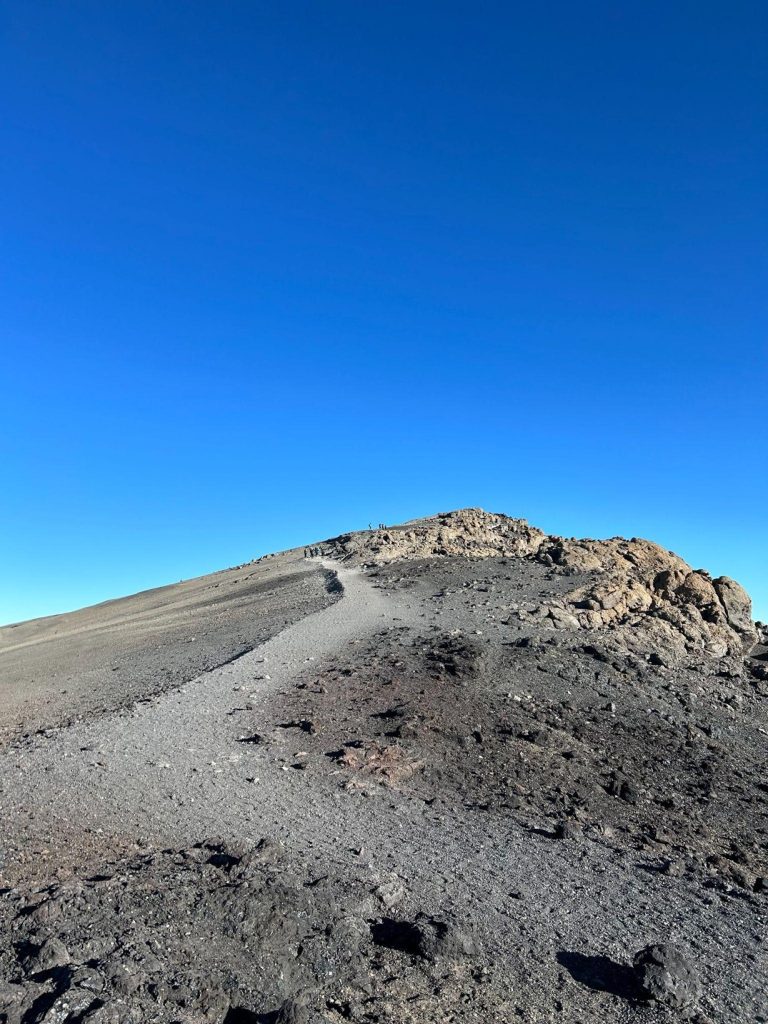
Final trail to the summit

So happy and proud we made it to the top!
It was breathtaking to see the views of the surrounding landscape and glaciers which are thought to fully disappear within the next 25 years due to climate change. Our guide, who has been climbing this mountain for 20 years, showed us where the glacier used to come up to when he first started climbing this mountain and it’s remarkable to see how much it has receded in those 20 years.

Furtwängler Glacier

Rebmann Glacier – Southern icefield at sunrise.
After 20 to 30 minutes at the top, we began to make our way back down to Stella Point and then began our descent back down to Barafu Camp. Often people make the mistake of thinking that descending is easier than ascending, but nope …it’s a lot harder! So while it took us eight hours to get to the top, it still took us another six hours to get back down. It was warmer, as it was daytime now, but the route down was steep, with a lot of scree (collection of broken rock fragments at the base of a cliff), which can be slippery and made worse because we were already tired and our muscles were feeling it. This part seemed to take soooo long and we could see the camp, but it just seemed to take forever for us to get there! By the time we stumbled back into camp, we were so exhausted and both our knees were killing us. But we only got a couple of hours to rest and have lunch, as we still had to descend another two hours to finish out Day 6 at Millennium Camp where we would spend our last night.
Day 7 was our last day on the mountain, but what a day it was! We both woke up feeling stiff and sore from the previous day and half and Craig was really feeling his legs and ankles. This day was probably the toughest part of the trek for him. It was 3,000 meters and seven more hours of downhill trekking, through the misting rainforest with slippery rocks and thick mud. It was a slow and arduous descent, but finally the end of the trail was in sight and we’d made it to the exit gate of the park. We couldn’t be happier to see the finish line!

Our descent back through the rainforest. I have never seen this much mud!
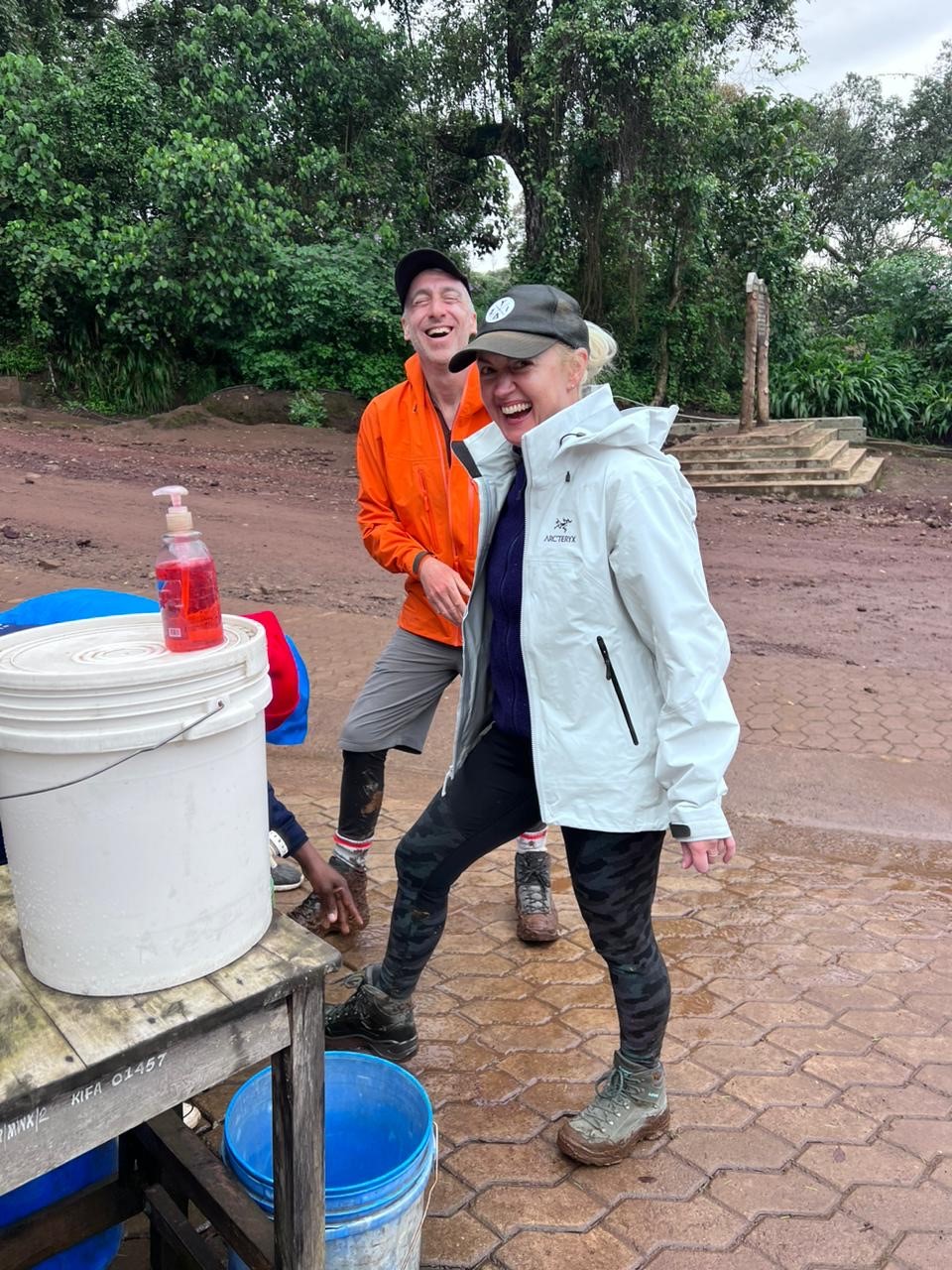
So happy … but time to clean all this mud!
Our day ended with a delicious lunch cooked by our chefs who fed us so well on the mountain, and a ceremony during which all four of our guides presented each member of our group with a certificate as we all had reached the summit successfully.
This accomplishment felt even bigger knowing that only 66% of people who attempt this climb each year actually reach the top of Mount Kilimanjaro. And we saw multiple helicopter evacuations on the way down. We both have our challenges living with inherited bleeding disorders, joint issues, surgeries, arthritis, chronic pain, but with proper training -strength training, joint mobility and cardio- and proper treatment, we realized that anything is possible. Given the new treatments available, Craig as a severe hemophiliac, came to realize that many of his limits were lifted and he was able to achieve something he never thought possible. For myself, through advocacy and the care and treatment I have access to, I was able to achieve this goal as well.
However, there are still so many women across our country who go undiagnosed and are still struggling to get the appropriate care to allow them to have productive, healthy, active lifestyles. Which is why we decided to use this adventure as a catalyst through the CHS to raise awareness and support for women and bleeding disorders. If you can and are able to donate, your support would be greatly appreciated.
CLICK HERE TO DONATE
CLICK HERE TO LEARN MORE ABOUT WOMEN WITH BLEEDING DISORDERS




